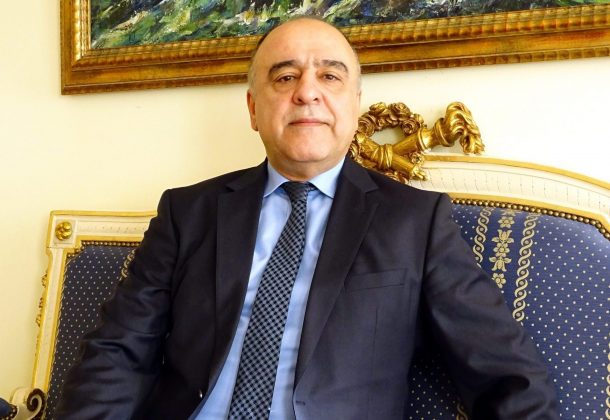
H.E. Mr. Fikret Akhundov - Ambassador of the Republic of Azerbaijan in the Netherlands.
In the world where ethnic and religious discrimination has become a regular phenomenon, Azerbaijan has remained as a model of intercultural and religious tolerance. In fact, multiculturalism and tolerance is a lifestyle of multinational and multiconfessional Azerbaijani people, as well as an integral part of the state policy, preserved throughout the centuries.
A clear example is the first Parliament of Azerbaijan in 1918, which united members of different ethnicities: Azerbaijanis, Russians, Armenians, Jews and even one German. Today, Baku International Center for Multiculturalism operates in Azerbaijan to research and promotes multiculturalism. In addition, there is a special counsellor to the government on multiculturalism, inter-ethnic and religious issues.
Furthermore, the Azerbaijani government, together with international organizations regularly hosts Intercultural Dialogue Forum and Baku International Humanitarian Forum in Azerbaijan.
Religious freedom is present throughout the country. Islam, Christianity, Jewism, as well as other religions are freely exercised in the country. There are practically all currents of Christianity present in Azerbaijan, such as Orthodox, Catholic, Lutheran, Protestant, Armenian-Gregorian, as well as historical Albanian church. More than 2 thousand mosques, 13 churches and 7 synagogues operate in Azerbaijan and this number is increasing on a yearly basis.
Azerbaijan is also a home for many ethnicities, such as Russians, Ukrainians, Belarusians, Kurds, Jews, Armenians, Greeks, Germans and Tatars. There are many settlements of ethnic minorities in Azerbaijan, like the village of a Jewish community in Azerbaijan – Red Town, a village of Molokans – Ivanovka, a village of Udins – Nij, and the Khinalig village of Guba. Ethnic minorities in the country have their own schools, cultural centers, mass media and internet resources. The government takes necessary measures to ensure that the children of ethnic minorities learn their native languages.
Among these ethnic minorities, the population of Khinalig village is unique in the world for its language. This ethnic minority has descended from the inhabitants of historical Caucasian Albania – a state that covered the lands that now form the Republic of Azerbaijan. Today, the government ensures preservation of the language of this unique population.
Another example of religious and cultural diversity in Azerbaijan is Red Town in Guba. This is one of the largest compact settlements of Jews in the world, outside of Israel. This settlement is also referred as “The Jerusalem of the Caucasus”. Red Town is a model for tolerance and respect for diversity.
It is worth mentioning that there are also German settlements in Azerbaijan, dating back to the beginning of the 19th century. The historical and cultural monument of these settlements – German Lutheran Church from 1854 is still preserved in Goygol, Azerbaijan.
Another German Lutheran Church was built in Baku in 1899. This church currently operates as the Chamber and Organ Music Hall of the Azerbaijan State Philharmonic. Various events and concerts are regularly held here. In 2017, 200th anniversary of the resettlement of the Schwab Germans was celebrated in Azerbaijan, with the decision of UNESCO.
Last, but not least, Azerbaijan is also home to approximately 30 thousand ethnic Armenians, despite the fact that more than 20% of territory of Azerbaijan has been occupied by Armenia. This clearly demonstrates the tolerance of Azerbaijani people for ethnic and religious minorities and diverse cultures. It also disproves the false Armenian propaganda that Azerbaijanis and Armenians are incapable of peaceful co-existence.
Remark: H.E. Mr. Fikret Akhundov is Ambassador of the Republic of Azerbaijan in the Netherlands.
Source: http://www.diplomatmagazine.eu/2020/04/05/azerbaijan-is-a-model-of-mult…